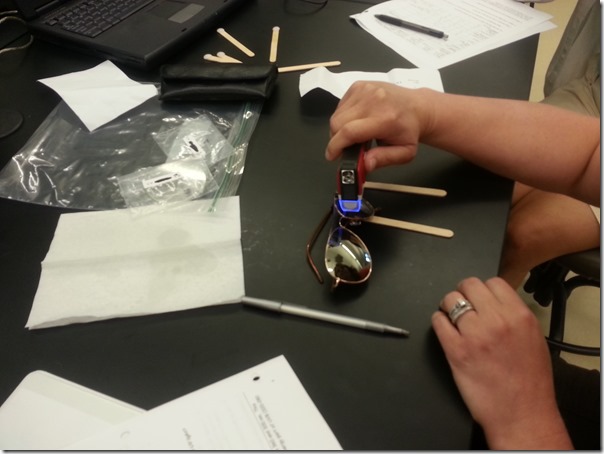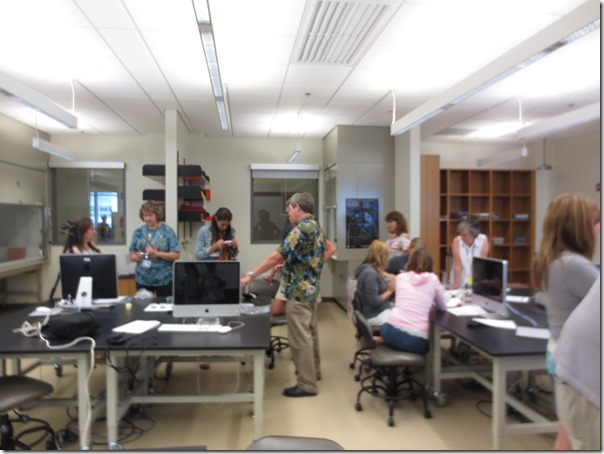Gel Diffusion lab, red food coloring
Day 5 was a good conclusion to the excellent experience that I’ve had at the UMass STEM Nanotechnology Institute 2013. We reviewed our crystal and Gelatin Diffusion experiments with the ADI software that I learned about at STEM Digital. It was powerful to be able to analyze the results with both Microsoft Excel and the ADI Software.
Jonathan Rothstein gave a presentation and talked further about Nanomedicines. As I posted yesterday about Nanotechnology impacts, nanomedicine will change the way that we treat many conditions and diseases. Nanomedicine will change the way that we even think about different diseases.
We spent the rest of the day sharing how we will use the material that we gained from this experience in our classrooms this upcoming school year. I’ve shared my poster below.

























